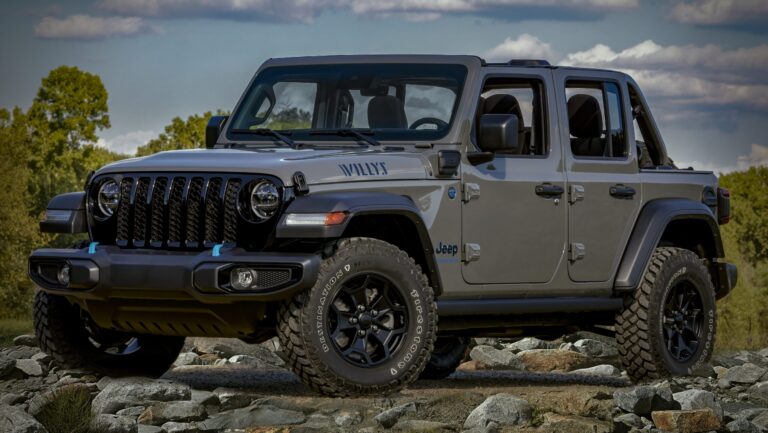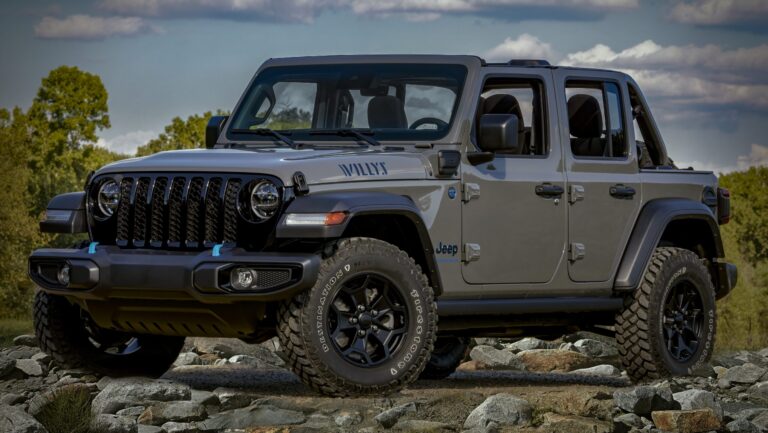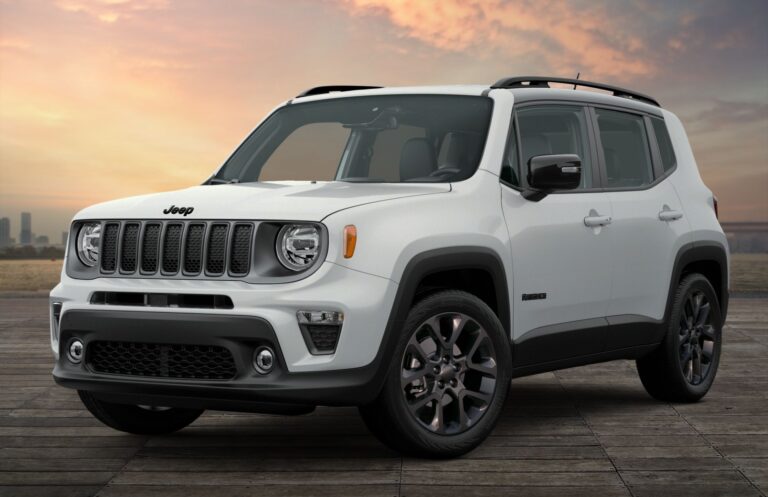97 Jeep Wrangler For Sale: Your Comprehensive Guide to Buying and Owning the Iconic TJ
97 Jeep Wrangler For Sale: Your Comprehensive Guide to Buying and Owning the Iconic TJ jeeps.truckstrend.com
The call of the open road, or more precisely, the untamed trail, often leads to one vehicle: the Jeep Wrangler. Among its storied lineage, the 1997 Jeep Wrangler, marking the debut of the revered TJ generation, holds a special place in the hearts of off-road enthusiasts and classic vehicle admirers alike. When you see "97 Jeep Wrangler For Sale," you’re not just looking at a used car; you’re looking at a piece of automotive history that blends classic ruggedness with modern (for its time) comfort, offering an unparalleled blend of capability, customizability, and pure driving fun.
This comprehensive guide is designed to be your definitive resource for navigating the market for a 1997 Jeep Wrangler. Whether you’re a seasoned Jeeper or a curious newcomer, we’ll delve into why the ’97 TJ remains so sought-after, what to meticulously inspect before purchase, how to price it, and what the ownership experience truly entails.
97 Jeep Wrangler For Sale: Your Comprehensive Guide to Buying and Owning the Iconic TJ
Why the 1997 Jeep Wrangler (TJ) Stands Out
The 1997 model year was a pivotal moment for the Jeep Wrangler. It marked the introduction of the TJ generation, replacing the leaf-sprung YJ and bringing a host of significant improvements while retaining the iconic, unmistakable Wrangler silhouette. The TJ was a game-changer, largely due to two key design decisions:
- Coil Spring Suspension: For the first time, the Wrangler featured a coil-spring suspension system on all four corners. This dramatically improved on-road ride comfort and handling, making it a more viable daily driver without compromising its legendary off-road articulation and capability.
- Return of Round Headlights: After the controversial square headlights of the YJ, the TJ brought back the classic round headlights, much to the delight of purists and fans. This instantly re-established its visual link to the original CJ-series Jeeps.
Under the hood, the 1997 TJ offered two primary engine options:

- 2.5L AMC I4 (4-cylinder): A reliable, if somewhat underpowered, engine, often found in base models. It’s sufficient for light off-roading and city driving but can feel strained on highways or with larger tires.
- 4.0L AMC I6 (Inline 6-cylinder): The undisputed king of TJ engines. This legendary straight-six is renowned for its torque, durability, and reliability. It’s the preferred choice for serious off-roading, towing, and those seeking more robust performance.
Transmission options included a 5-speed manual (AX-5 for 2.5L, AX-15 for 4.0L) or a 3-speed automatic (32RH). The combination of a robust chassis, proven powertrains, and a highly adaptable design quickly cemented the TJ’s reputation as one of the most beloved and capable Wranglers ever produced.

What to Look For When Buying a 97 Jeep Wrangler: A Detailed Inspection Guide
When considering a "97 Jeep Wrangler For Sale," a thorough inspection is paramount. These vehicles are now over two decades old, and their off-road heritage means they may have led a harder life than typical cars.
1. Rust, Rust, Rust! (The #1 Priority)
Jeeps, especially older ones, are notorious for rust. This is your absolute first and most critical area to inspect.

- Frame: Inspect the entire frame, paying close attention to the areas around the control arm mounts, skid plates, and suspension mounting points. Look for flaking, bubbling, or perforations. Tap with a small hammer – a dull thud or crunch indicates rot.
- Body: Check rocker panels (under the doors), front fenders (especially behind the wheels), floorboards (under the carpet), and the rear cross member (below the tailgate). The area where the body mounts to the frame is also susceptible.
- Tub: Lift the carpet, especially in the front footwells and under the rear seat, to check for rusted-through spots.
2. Engine & Drivetrain
- 4.0L Engine: Listen for unusual noises (knocking, ticking). Check for oil leaks, especially the rear main seal (a common, but often not critical, leak), and valve cover gasket. Inspect the cooling system (radiator, hoses, water pump) for leaks or signs of neglect. Check fluid levels and clarity.
- 2.5L Engine: Similar checks as the 4.0L, though these are generally less prone to major issues due to lower stress.
- Transmission:
- Manual: Test all gears, including reverse. Look for grinding, difficulty shifting, or popping out of gear.
- Automatic: Check for smooth shifts, no harsh jerking or slipping.
- Transfer Case: Engage 2H, 4H, and 4L. Ensure it shifts smoothly into each mode and that the 4WD light illuminates. Drive slowly in a straight line on a loose surface (like gravel) in 4H to confirm engagement.
- Differentials: Check for leaks around the covers and axle seals. Listen for whining or clunking noises during a test drive, which could indicate worn gears or bearings.
- U-Joints: Look for rust or play in the universal joints on the driveshafts.
3. Suspension & Steering
- Lift Kits: Many TJs have aftermarket lift kits. Assess the quality of the installation. Are components reputable brands? Are bolts tight? Look for worn bushings, bent control arms, or damaged shocks. A poorly installed lift can cause numerous issues.
- Shocks and Springs: Check for fluid leaks on shocks and broken or sagging springs.
- Steering: With the engine running, turn the wheel back and forth slightly. Excessive play (more than an inch or two) indicates worn steering components (tie rod ends, ball joints, steering box).
4. Electrical & Interior
- All Lights: Headlights, tail lights, turn signals, brake lights, interior lights, and dash lights.
- Gauges: Ensure all gauges (speedometer, tachometer, fuel, temperature, oil pressure, voltage) are working correctly.
- HVAC: Test the heater and air conditioning.
- Wipers/Washer: Check functionality.
- Interior: Assess the condition of seats (rips, tears), carpet (stains, mold, rust underneath), and dashboard (cracks from sun exposure).
5. Aftermarket Modifications
Be wary of extreme modifications unless you specifically know what you’re looking for. A well-executed, moderate lift with appropriate gear ratios can add value, but a poorly done, cheap lift with massive tires can cause serious problems and indicate neglect. Ask for receipts for any major modifications.
6. Documentation & History
- Service Records: A stack of maintenance records indicates a conscientious owner.
- CarFax/VIN Check: Always run a vehicle history report to check for accidents, flood damage, salvage titles, or odometer rollbacks.
Pricing Your 97 Jeep Wrangler: Factors and Considerations
The price of a "97 Jeep Wrangler For Sale" can vary wildly, from a few thousand dollars for a rough example to over $20,000 for a meticulously restored or heavily modified showpiece. Here are the key factors influencing value:
- Overall Condition: This is the most significant factor.
- Excellent: Minimal to no rust, pristine frame, well-maintained engine/drivetrain, clean interior, all systems fully functional. Commands top dollar.
- Good: Minor surface rust, good running condition, some wear and tear, but no major mechanical issues. Most common finding.
- Fair: Moderate rust (potentially some through-holes), needs significant mechanical work (e.g., transmission, engine overhaul), worn interior. Low end of the price spectrum.
- Poor/Parts: Extensive frame rust, major mechanical failure, salvage title. Often sold for parts or as a project for very experienced mechanics.
- Engine Type: The 4.0L inline-six almost always commands a premium over the 2.5L four-cylinder due to its superior power and reputation for longevity.
- Mileage: Lower mileage generally fetches a higher price, assuming it’s commensurate with the vehicle’s overall condition and maintenance history. However, a high-mileage TJ with meticulous records can be a better buy than a lower-mileage one that was neglected.
- Transmission: While preferences vary, both manual and automatic versions generally hold similar value, with a slight edge to manual for some enthusiasts.
- Hard Top vs. Soft Top: A factory hard top adds significant value (often $1,000-$2,000) due to its security, insulation, and durability.
- Aftermarket Modifications: Quality, desirable modifications (e.g., reputable lift kit, quality tires, winch, steel bumpers) can add value. Poorly installed, cheap, or extreme modifications can actually detract from value.
- Rust Presence: A rust-free frame and body will drastically increase the value. Even minor frame rust can significantly depress the price.
- Documentation: Comprehensive service records and proof of maintenance boost buyer confidence and can justify a higher price.
- Location: Prices can vary regionally based on demand and the prevalence of rust-free vehicles (e.g., a rust-free TJ from Arizona will fetch more in a rust-prone state like Ohio).
Estimated Price Table for 97 Jeep Wrangler For Sale
Please note: These prices are estimates and can fluctuate based on market demand, specific modifications, and exact condition. Always research local listings for the most accurate current market value.
| Condition | Engine Type | Estimated Price Range (USD) | Key Factors / Description |
|---|---|---|---|
| Excellent | 4.0L I6 | $12,000 – $20,000+ | Near-perfect frame, minimal to no rust, meticulously maintained, low mileage for age, potentially restored or with desirable, professional modifications. Hard top often included. |
| Excellent | 2.5L I4 | $9,000 – $15,000 | Similar condition as above, but with the 4-cylinder engine. |
| Good | 4.0L I6 | $8,000 – $12,000 | Some surface rust, good running condition, average mileage (150k-200k), well-maintained, minor cosmetic flaws, might have tasteful modifications. Soft top common. |
| Good | 2.5L I4 | $6,000 – $9,000 | Similar condition as above, but with the 4-cylinder engine. |
| Fair | 4.0L I6 | $4,000 – $8,000 | Moderate rust (some minor through-holes possible), needs some mechanical work (e.g., suspension, steering components, minor leaks), worn interior, higher mileage. Good for a project or daily driver with TLC. |
| Fair | 2.5L I4 | $3,000 – $6,000 | Similar condition as above, but with the 4-cylinder engine. |
| Poor / Project | Any Engine | $1,000 – $4,000 | Significant frame rust, major mechanical issues, non-running, accident damage, salvage title. Best for parts or a full restoration by an experienced mechanic. |
The Customization Canvas: Modifying Your 97 TJ
One of the most compelling reasons to own a 1997 Jeep Wrangler is its unparalleled customizability. The aftermarket support for the TJ generation is enormous, making it a true blank canvas for personalization.
- Lift Kits and Tires: This is often the first modification. Lifts range from mild 1-2 inch spacers for a better stance to extreme 6+ inch long-arm systems for rock crawling. Larger tires (31-35 inches being common) enhance off-road capability and aesthetics.
- Bumpers and Armor: Steel bumpers, rock sliders, and skid plates protect the vehicle during off-road excursions and provide mounting points for winches and lights.
- Winch: Essential for self-recovery or assisting others on the trail.
- Lighting: LED light bars, spot lights, and fog lights improve visibility in challenging conditions.
- Interior Upgrades: Aftermarket seats, sound systems, and storage solutions enhance comfort and utility.
- Performance Upgrades: Re-gearing axles for larger tires, cold air intakes, exhaust systems, and even engine swaps (though less common for a 97) can boost performance.
Practical Advice: When modifying, always prioritize safety and functionality. Research reputable brands, read reviews, and consider professional installation for complex upgrades, especially those affecting steering or suspension. Improper modifications can lead to dangerous driving conditions and premature wear of components.
The Ownership Experience: Pros and Cons
Owning a "97 Jeep Wrangler For Sale" is an experience unlike any other. Here’s a realistic look at what to expect:
Pros:
- Legendary Off-Road Capability: Even stock, the TJ is incredibly capable. With modifications, it can tackle almost any terrain.
- Iconic Design: The classic round headlights and rugged stance are timeless.
- Strong Aftermarket Support: Parts are abundant, and modifications are endless.
- Simple Mechanics: Relatively easy to work on for the DIY enthusiast, saving on labor costs.
- Vibrant Community: Owning a Jeep connects you to a passionate and helpful community.
- Resale Value: TJs hold their value remarkably well, especially well-maintained 4.0L models.
- Open-Air Driving: Removable doors, fold-down windshield, and soft/hard top options offer an unmatched open-air experience.
Cons:
- Fuel Economy: Expect 15-18 MPG for the 4.0L and slightly better for the 2.5L, but it’s not a fuel-sipper.
- Ride Quality: While better than the YJ, it’s still a body-on-frame SUV with solid axles. The ride can be bouncy, especially with a stiff lift.
- Noise: Soft tops can be noisy at highway speeds.
- Security: Soft tops offer minimal security for belongings.
- Potential for Rust: This remains the biggest long-term battle, especially in colder climates.
- Older Vehicle Issues: Being 27+ years old, you’ll encounter age-related wear and tear (hoses, seals, electrical gremlins).
Concluding Summary
The 1997 Jeep Wrangler (TJ) represents a sweet spot in the Wrangler lineage, offering the perfect blend of classic Jeep aesthetics, improved on-road manners thanks to its coil-spring suspension, and uncompromised off-road prowess. Its enduring popularity means that a "97 Jeep Wrangler For Sale" will always attract attention.
By understanding what makes the TJ special, diligently inspecting for common issues like rust, and accurately assessing its value based on condition and features, you can make an informed decision. Whether you’re seeking a rugged daily driver, a weekend trail warrior, or a project vehicle to build your dream rig, the ’97 TJ offers an unparalleled canvas for adventure. Embrace the journey, and you’ll find that owning a TJ is not just about having a vehicle; it’s about becoming part of a lifestyle.
Frequently Asked Questions (FAQ) about the 97 Jeep Wrangler For Sale
Q1: Is the 1997 Jeep Wrangler a reliable vehicle?
A1: Yes, especially the 4.0L inline-six engine, which is known for its legendary reliability and longevity. However, as with any vehicle over 25 years old, regular maintenance is crucial, and age-related wear on components like seals, hoses, and electrical systems can occur.
Q2: What’s the main difference between the 4.0L and 2.5L engines in the ’97 TJ?
A2: The 4.0L inline-six offers significantly more horsepower and torque (approx. 181 hp / 222 lb-ft) compared to the 2.5L four-cylinder (approx. 120 hp / 135 lb-ft). The 4.0L is generally preferred for its better performance, especially on highways or with larger tires, and is more sought after.
Q3: How much does a lift kit typically cost for a 97 TJ?
A3: The cost varies widely based on the type and quality. A basic budget boost (spacers) might be a few hundred dollars. A quality 2-4 inch suspension lift kit from a reputable brand can range from $500 to $2,000+. More advanced long-arm kits for extreme off-roading can easily exceed $3,000. Installation costs are extra if you don’t DIY.
Q4: Where are the most common rust spots on a 97 Jeep Wrangler?
A4: The most critical areas are the frame (especially near control arm mounts and skid plates), rocker panels (under the doors), front fenders (behind the wheels), and the floorboards (under the carpet). Always check these areas thoroughly.
Q5: Are parts hard to find for a 1997 Jeep Wrangler?
A5: Absolutely not! The TJ generation (1997-2006) is incredibly popular, and the aftermarket support is massive. You’ll find a huge selection of new, used, OEM, and aftermarket parts readily available online and at specialty shops.
Q6: What’s the typical gas mileage for a 97 TJ?
A6: For the 4.0L engine, expect around 15-18 miles per gallon (MPG) combined, depending on driving style, modifications (especially larger tires), and gearing. The 2.5L might get slightly better, perhaps 17-20 MPG, but it sacrifices power.
Q7: Should I buy a manual or automatic transmission?
A7: This largely comes down to personal preference and intended use.
- Manual: Offers more control off-road, can be more engaging to drive, and some enthusiasts prefer it.
- Automatic: Easier in stop-and-go traffic, generally better for crawling at very low speeds off-road for some drivers.
Both transmissions are generally robust. Test drive both if possible to see what you prefer.





